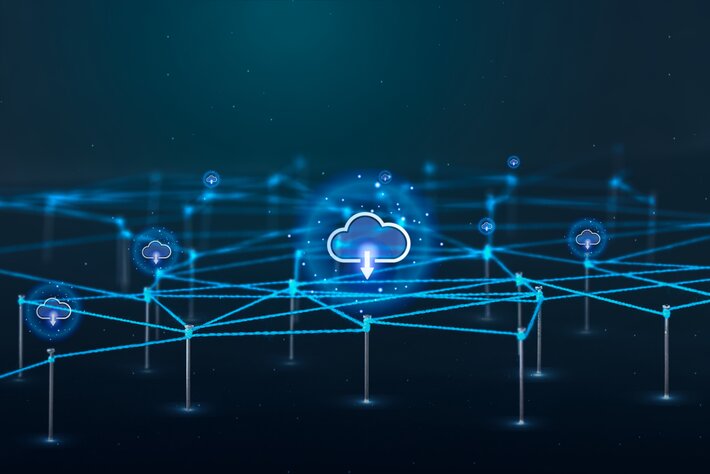The latest extinction rebellion highlighted an increasingly urgent appetite from the public to tackle climate change and ensure greater sustainability.
Brands are no exception to the story. Environmentally-aware consumers don’t just want to make the world a better place; a recent survey from Futerra found the majority (96%) feel their behaviour and purchasing choices can fuel real change. These consumers recognise they have a social responsibility to reduce their carbon footprint and this is dictating their purchasing decisions, says Richard Baker, CEO of GeoSpock.
Creating a cleaner customer journey
As consumers demand the demonstration of good corporate citizenship with a strong eco commitment, brands must strike the balance between what is right for their businesses with what is right for humanity and the environment.
Already we’re seeing reaction and response – recently, John Lewis confirmed its first plastic-free bag trial in Oxford, while Vodafone have announced an initiative to sell more sustainable phones by the end of this year. But more needs to be done across the industry if brands are to remain in consumers’ shopping baskets. Products must tell sustainable stories across the supply chain, allowing consumers to track this from production to delivery.
Engaging with ethical consumers
In Denmark, for example, the government is working with supermarkets on creating labels that explain food products’ carbon footprints. While the idea of carbon labelling has been around for some time, there are very few brands that provide this level of visibility. In 2012, Tesco dropped a plan to label its product with their carbon footprint because the amount of work involved in calculating the figure.
However, nearly a decade on and this challenge is becoming less daunting. Sensors are now embedded into innocuous everyday objects. All of these items are now linked by the internet, sharing intelligence that can be used to deliver greater transparency into the provenance of individual products.
Take small frequent buys that have a high environmental impact – such as perishable food or supermarket flowers. Sensors in the form of Radio Frequency Identification transmitters and GPS systems are used to track goods as they move from the production plant to storage facilities and are transported onto shop shelves.
This intelligence can be used to give consumers an accurate view of where products have travelled. Brands can also capture the emissions produced by every vehicle or vessel involved in the transportation process and relay this back to customers.
Interestingly, QR codes are providing the answer and meeting customers demand for more transparency. Using QR codes to access extra information might not be new exactly, but using spatial big data platforms, QR codes can read digital barcodes to provide deeper insights.
Instead of simply enabling consumers to simply check brand credentials – such as safety certificates and distribution licences – QR codes can open apps that provide visualisations of product journeys. Route maps can even show precise movement of shipments from source to store and provide compelling proof of supply chain integrity through leveraging vast sets of data on a product’s location and environment.
Optimising operations through IoT
Armed with greater intelligence, brands have an opportunity to optimise their operations to achieve greater efficiency and demonstrate their commitment to sustainability.

The insight on the movement of goods can be combined with information such as temperature, humidity levels and shipping times. By combining the data sets available, brands can improve distribution models. For example, food with a short shelf life can be sent to a nearby destination with high-demand to limit food wastage.
Brands can also streamline delivery services – something that’s particularly important given the explosion in online shopping.
Brands can use data from IoT-enabled devices such as connected cars, wearables and even the SIM cards that delivery drivers use. Each one represents a point of interest on the move, meaning its route can be accurately determined.
Brands can analyse driver routes, calculate average drop times, dwell times, as well as distances between drops. Density analysis reveals when multiple drivers are operating in the same area at the same time, while additional data sets can reveal whether drops were successful or not.
By leveraging IoT data, brands can evaluate driver routes against delivery data – including pick-up windows and fulfilment times, and logistics tools. This information can then be combined with information on pollution levels, congestion areas and even weather forecasting, to define which routes will keep both costs and emissions low.
Changing the economics of sustainability
The opportunities that exist for brands to optimise their operations and demonstrate their eco commitment are plenty.
Today’s consumers are living in turbulent times surrounded by political uncertainty, economic instability, disinformation campaigns and climate change. They also live in an age where there is an unprecedented amount of information available to them. As a result, they are making carefully considered purchases. They are researching products and buying items that align with their values.
To engage with a new generation of consumers, brands need to show greater authenticity. They need to help consumers make informed purchasing decisions through greater transparency.
All this relies on the ability to gather and process vast quantities of data. By leveraging the full force of big data, tech can help brands optimise operations to reduce their carbon footprint and provide heightened visibility to consumers on product provenance. It’s a small, incremental change that can ultimately help contribute to a greater cause.
The author is Richard Baker, CEO, GeoSpock
Comment on this article below or via Twitter: @IoTNow_OR @jcIoTnow










